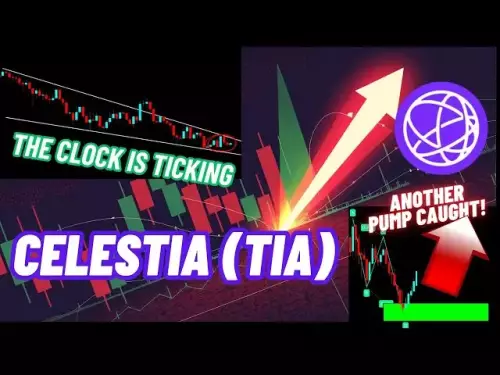-
 Bitcoin
Bitcoin $110300
2.62% -
 Ethereum
Ethereum $4378
-0.34% -
 Tether USDt
Tether USDt $0.9999
-0.01% -
 XRP
XRP $2.797
2.18% -
 BNB
BNB $851.8
-0.22% -
 Solana
Solana $202.3
2.23% -
 USDC
USDC $0.9998
-0.01% -
 Dogecoin
Dogecoin $0.2134
1.75% -
 TRON
TRON $0.3395
0.56% -
 Cardano
Cardano $0.8165
1.39% -
 Chainlink
Chainlink $23.23
1.20% -
 Hyperliquid
Hyperliquid $44.31
0.26% -
 Ethena USDe
Ethena USDe $1.001
0.00% -
 Sui
Sui $3.285
3.78% -
 Stellar
Stellar $0.3611
3.68% -
 Bitcoin Cash
Bitcoin Cash $564.6
5.91% -
 Avalanche
Avalanche $23.78
3.05% -
 Hedera
Hedera $0.2186
1.98% -
 UNUS SED LEO
UNUS SED LEO $9.577
-0.45% -
 Cronos
Cronos $0.2628
-4.43% -
 Litecoin
Litecoin $110.5
2.60% -
 Toncoin
Toncoin $3.141
0.91% -
 Shiba Inu
Shiba Inu $0.00001225
2.12% -
 Polkadot
Polkadot $3.778
2.86% -
 Uniswap
Uniswap $9.555
1.79% -
 World Liberty Financial
World Liberty Financial $0.2341
2.39% -
 Dai
Dai $0.9999
0.01% -
 Bitget Token
Bitget Token $4.695
3.83% -
 Monero
Monero $263.2
-1.55% -
 Aave
Aave $311.1
0.14%
What is leverage in crypto trading and its risks?
Leverage in crypto trading amplifies both gains and losses by allowing traders to control larger positions with less capital, but high leverage increases liquidation risk and demands strict risk management.
Sep 02, 2025 at 10:54 am
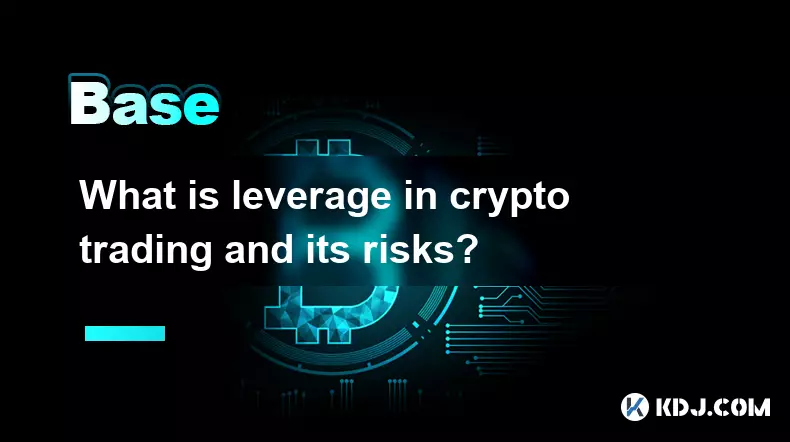
Understanding Leverage in Crypto Trading
1. Leverage in crypto trading allows traders to borrow funds to increase the size of their trading positions beyond what their actual capital would permit. This borrowed capital comes from exchanges or brokers and enables exposure to larger price movements with a relatively small initial investment.
2. For example, using 10x leverage means that with $1,000 of personal capital, a trader can control a position worth $10,000. The amplified exposure magnifies both potential gains and losses relative to the trader’s initial margin.
3. Leverage is commonly offered on derivatives platforms that support futures and perpetual contracts. These instruments are popular among active traders seeking to profit from short-term volatility in digital assets like Bitcoin and Ethereum.
4. The leverage ratio varies across platforms and can range from 2x to as high as 125x depending on the exchange, asset, and market conditions. Higher leverage increases sensitivity to price changes, making risk management crucial.
5. Traders must post collateral, known as margin, to open and maintain leveraged positions. If the market moves against them, the margin level decreases, potentially triggering a liquidation event when losses exceed available funds.
Risks Associated with High Leverage
1. Rapid Liquidation: Positions with high leverage can be liquidated quickly even with minor adverse price movements. A small drop in the asset’s value can erase the entire margin, leading to automatic closure of the trade by the platform.
2. Amplified Losses: While leverage can multiply profits, it equally magnifies losses. A trader using 50x leverage could lose their entire investment from a 2% move against their position, making risk exposure significantly higher than in spot trading.
3. Funding fees in perpetual contracts add another layer of cost, especially for long-term leveraged positions. These recurring payments can erode profits or deepen losses over time, particularly in volatile or sideways markets.
4. Market slippage during periods of high volatility can result in execution at much worse prices than expected, worsening the impact of sudden reversals. This is especially dangerous in low-liquidity altcoin markets where large price swings are common.
5. Emotional stress increases with leveraged trading due to the fast-paced nature and high stakes involved. Traders may make impulsive decisions under pressure, such as holding losing positions too long or overtrading after a loss.
Strategies to Manage Leverage Risk
1. Setting strict stop-loss orders helps limit potential losses by automatically closing positions when prices reach predetermined levels. This tool is essential for maintaining discipline and protecting capital.
2. Using lower leverage ratios, even when higher options are available, reduces the risk of liquidation and provides more breathing room for price fluctuations. Many experienced traders prefer 2x to 10x for better control.
3. Diversifying across different assets and avoiding concentrated bets minimizes the impact of a single failed trade. Overexposure to one leveraged position can jeopardize an entire portfolio.
4. Monitoring open positions regularly and staying informed about market news and macroeconomic factors helps anticipate sudden shifts. Unexpected regulatory announcements or exchange outages can trigger sharp moves.
5. Practicing on demo accounts before risking real funds allows traders to understand how leverage behaves under different market conditions without financial consequences.
Frequently Asked Questions
What happens when a leveraged position gets liquidated?When a leveraged position is liquidated, the exchange automatically closes the trade to prevent further losses beyond the trader’s margin. The remaining collateral may be partially or fully lost, depending on the severity of the price movement and the platform’s liquidation mechanism.
Can leverage be used in spot trading?No, leverage is not applied in traditional spot trading where assets are bought and sold at current market prices. It is exclusive to margin-based products such as futures, options, and margin trading accounts.
Do all crypto exchanges offer the same leverage limits?No, leverage limits vary significantly between exchanges. Some platforms cap leverage at 10x for compliance reasons, while others, particularly offshore derivatives exchanges, offer up to 125x on certain pairs.
How does maintenance margin work in leveraged trading?Maintenance margin is the minimum amount of equity required to keep a leveraged position open. If the account balance falls below this threshold due to losses, the trader must deposit more funds or face forced liquidation by the exchange.
Disclaimer:info@kdj.com
The information provided is not trading advice. kdj.com does not assume any responsibility for any investments made based on the information provided in this article. Cryptocurrencies are highly volatile and it is highly recommended that you invest with caution after thorough research!
If you believe that the content used on this website infringes your copyright, please contact us immediately (info@kdj.com) and we will delete it promptly.
- Sonic Labs: Riding the $150M Market Growth Wave into TradFi
- 2025-09-02 16:45:13
- Altcoins in September: Bullish Signals Amidst Market Swings
- 2025-09-02 16:45:13
- Justin Sun's $200M WLFI Token Grab: No Plans to Sell, He Says!
- 2025-09-02 16:25:16
- Coinbase, OKX, and Aussie Pensions: Crypto's Down Under Incursion
- 2025-09-02 16:50:13
- WLFI: Meme-Driven Altcoin or High-Stakes Gamble?
- 2025-09-02 16:55:13
- Coincheck's European Thrust: Trust, Tech, and French Compliance
- 2025-09-02 17:00:13
Related knowledge

What is a "crypto trading bot" and do they work?
Sep 02,2025 at 04:19pm
Understanding Crypto Trading Bots1. A crypto trading bot is a software application designed to automate the process of buying and selling cryptocurren...

What is a "stealth launch" for a crypto project?
Sep 02,2025 at 02:00pm
Understanding the Concept of a Stealth Launch in Cryptocurrency1. A stealth launch refers to the release of a cryptocurrency project without prior ann...
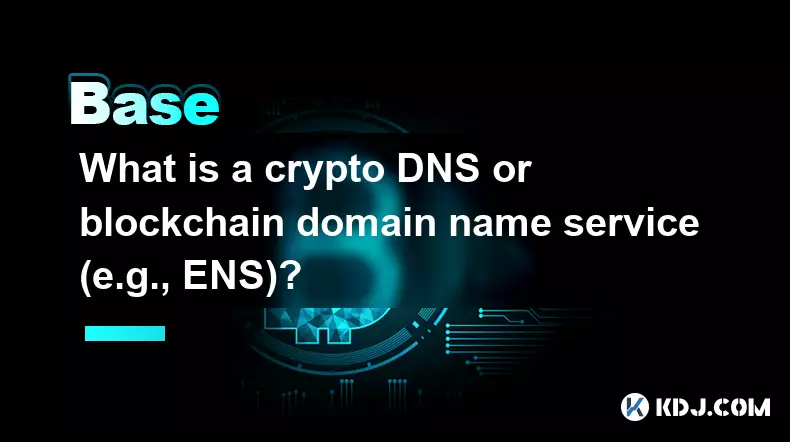
What is a crypto DNS or blockchain domain name service (e.g., ENS)?
Sep 02,2025 at 03:37pm
Understanding Blockchain-Based Domain Name Services1. Blockchain domain name services, such as the Ethereum Name Service (ENS), provide human-readable...
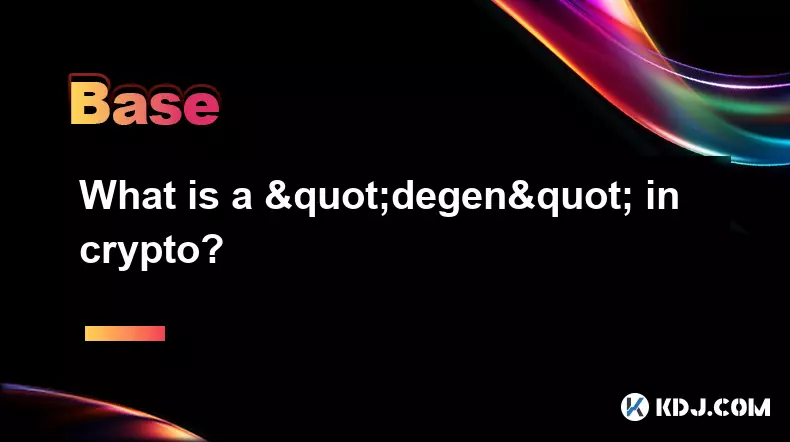
What is a "degen" in crypto?
Sep 02,2025 at 03:18pm
Understanding the Term 'Degen' in the Crypto Space1. The term 'degen,' short for 'degenerate,' has been widely adopted in the cryptocurrency community...
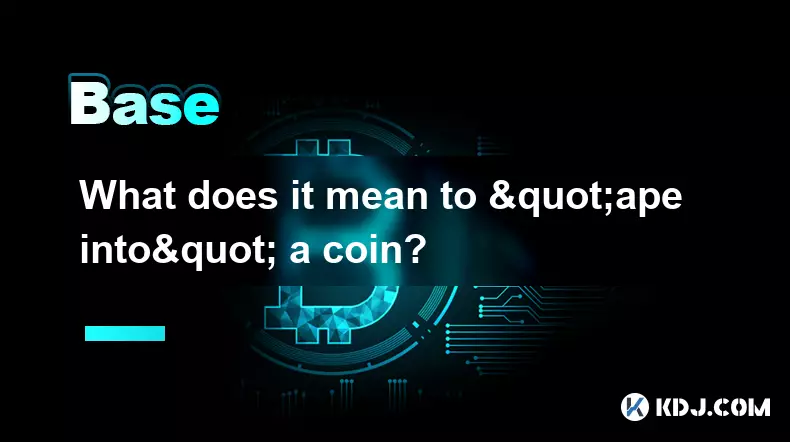
What does it mean to "ape into" a coin?
Sep 02,2025 at 12:54pm
Emerging Trends in Decentralized Finance (DeFi)1. Liquidity mining has become a dominant mechanism for attracting users to DeFi platforms. Projects in...

What is the "fat protocol thesis"?
Sep 02,2025 at 05:01pm
Understanding the Fat Protocol Thesis1. The fat protocol thesis is a concept introduced in 2016 by Joel Monegro to describe the economic value distrib...

What is a "crypto trading bot" and do they work?
Sep 02,2025 at 04:19pm
Understanding Crypto Trading Bots1. A crypto trading bot is a software application designed to automate the process of buying and selling cryptocurren...

What is a "stealth launch" for a crypto project?
Sep 02,2025 at 02:00pm
Understanding the Concept of a Stealth Launch in Cryptocurrency1. A stealth launch refers to the release of a cryptocurrency project without prior ann...

What is a crypto DNS or blockchain domain name service (e.g., ENS)?
Sep 02,2025 at 03:37pm
Understanding Blockchain-Based Domain Name Services1. Blockchain domain name services, such as the Ethereum Name Service (ENS), provide human-readable...

What is a "degen" in crypto?
Sep 02,2025 at 03:18pm
Understanding the Term 'Degen' in the Crypto Space1. The term 'degen,' short for 'degenerate,' has been widely adopted in the cryptocurrency community...

What does it mean to "ape into" a coin?
Sep 02,2025 at 12:54pm
Emerging Trends in Decentralized Finance (DeFi)1. Liquidity mining has become a dominant mechanism for attracting users to DeFi platforms. Projects in...

What is the "fat protocol thesis"?
Sep 02,2025 at 05:01pm
Understanding the Fat Protocol Thesis1. The fat protocol thesis is a concept introduced in 2016 by Joel Monegro to describe the economic value distrib...
See all articles

























